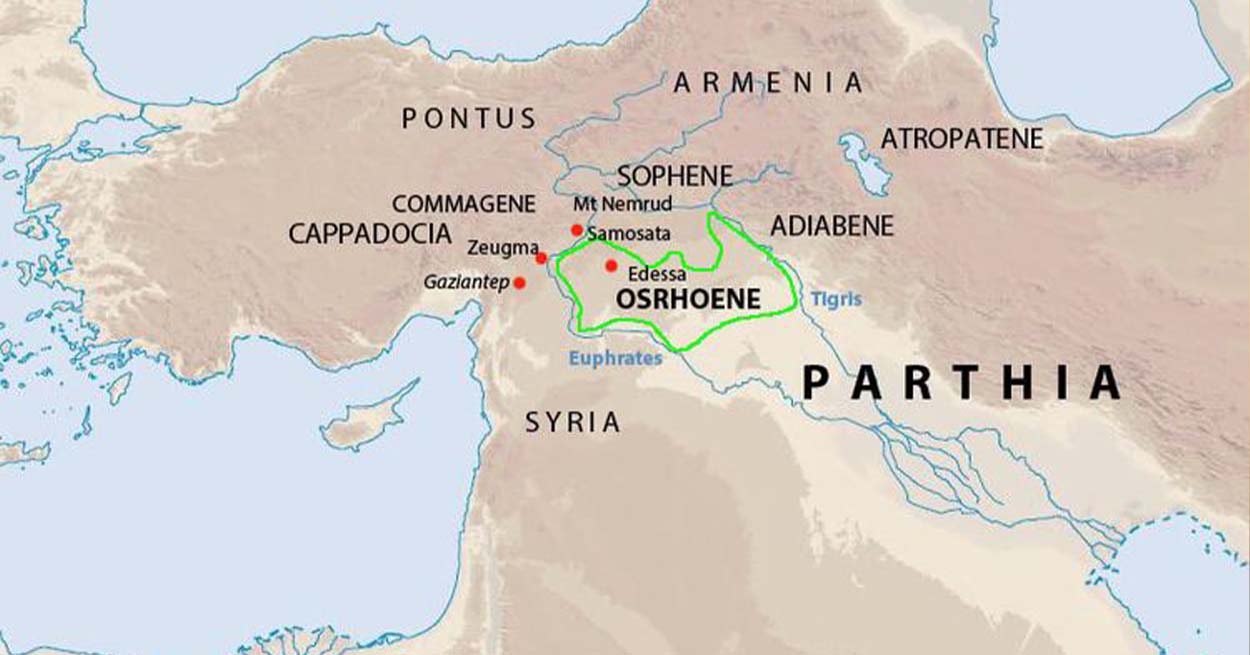The School of Urhoy: When Syriac Enlightened the Face of the East
In an age when darkness clouded minds, empires clashed over lands, and kingdoms trembled under the clang of swords, a humble flame was born in a small city of the Fertile Crescent. This flame wielded no sword, nor fired any arrow, but carried ink, a reed pen, and parchment, choosing to fight ignorance with light. This flame came to be known as the School of Urhoy, likely founded in the early 3rd century AD.
The city of Urhoy — known to some as Edessa or Urfa — was little more than a quiet town on the margins of empires, breathing in the legacy of ancient Assyria, Babylon, and Sumer through its ancient rivers. No one could have imagined that this modest city would one day become a beacon of knowledge and wisdom, drawing students of insight from across the East.
Its beginnings were humble, tucked away in the alleys of an old church, where priests met with disciples. Small scraps of writings accumulated — interpretations of the Gospels, creeds of faith, secrets of healing, and the wisdom of philosophy. There was no formal educational system, but there was passion, and a dream that faith could become a tool of understanding rather than a prison for the mind.
Then came Ephrem, the poetic monk whose tears and hymns echoed through valleys and mountains. Ephrem carried a fire unseen to the eye, yet powerful enough to burn away ignorance and transform souls into light. After the fall of Nisibis, he entered Urhoy, bringing with him the wisdom of his old city and shaping it into a vibrant heart within Urhoy. He gathered students and planted in them a love of truth — not fearing philosophy nor fleeing logic. He wanted them to see God through reason just as they saw Him in prayer.
Within the school’s courtyard, poetry was shared as freely as bread, and philosophy was discussed as casually as everyday matters. Hymns blossomed like spring flowers, and corridors filled with conversations about soul and body, creation and eternity, sickness and healing, humanity and God.
Soon the school’s fame spread. Students arrived from the upper reaches of the Euphrates, the plains of Nineveh, the mountains of Armenia, and even from the cities of Byzantium. They came not just for religious instruction, but to drink deeply from the vast ocean of Syriac wisdom that the school nurtured in every drop of knowledge it received.
Yet glory seldom pleases the ruler. As theological conflicts intensified and tensions between church factions grew, the School of Urhoy became a target of accusation, then exile, then closure. In 489 AD, the order was given: Shut down the school!
But how can one close the light? How can a mind nurtured by the spirit be extinguished? The teachers left, and the students walked the roads of exile, but they carried no sorrow — only books, poems, and manuscripts. From Urhoy, the seeds spread — planted in Nisibis, then Mount Qandis, and later in the heart of Baghdad.
The School of Urhoy became a living legend, not only told but lived. In every subsequent Christian school in the East, in every page translated from Greek to Syriac and then to Arabic, the spirit of Urhoy whispered to the reader: Be free, explore, and grant your mind the right to love God in its own way.
The School of Urhoy was not walls or classrooms; it was a vision — that faith and reason could reconcile, and that the East could become a home of thought as much as a home of revelation.
Today, though the school’s ruins are no longer visible to the eye, its echo remains alive in every seeker who chooses the path of knowledge amid the darkness of dependency, and in every soul who believes that the Word was in the beginning and will remain, in the end, the eternal light that never fades.
Also read:
Qenneshre: The Eagle’s Nest Where Worlds Met and Knowledge Soared
The Role of the Syriacs in the House of Wisdom in Baghdad
The Syriac University of Nisibis: A Beacon of Knowledge in Late Antiquity
Gundishapur University: The Forgotten Beacon of Ancient Knowledge

















